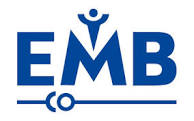Ubiquitous devices like smartphones and the Apple Watch hold so much promise to revolutionize healthcare – especially when it comes to the relationship between patient and clinician. But before the revolution can become reality, there are major barriers to overcome.
An example: a developer might create an app that enables a diabetic person to track their vital statistics like blood pressure, glucose level, activity level, and heart rate to help inform their medical treatment, but in order for this data to be useful to a clinician treating diabetes, the data must be accurate, consistent, wholly reliable, not manipulated in any way by the patient, and easily interpreted by the clinician. The app developer needs to work directly with regulatory bodies, obtain design input from clinicians, and so on. Making those important connections with people from such vastly different professions is a huge, time consuming, and often costly challenge.
A major step in the right direction starts with getting all the right people in the same room to map out a plan of action.
Last week a groundbreaking, first-of-its-kind conference was held at the National Institutes of Health (NIH) to convene the necessary decision makers – from policymakers to entrepreneurs, clinicians to academics – to discuss challenges and work together to develop actual solutions.
The Strategic Conference on Healthcare Innovations and Point-of-Care (POC) Technologies for Precision Medicine was co-hosted by the NIH and the IEEE Engineering in Medicine and Biology Society. Speakers included executives from:
- The Bill & Melinda Gates Foundation
- The National Cancer Institute
- Johns Hopkins University
- The Ambulatory Practice of the Future
- Massachusetts General Hospital, and many more.
“This was very much a working conference, where speakers and attendees developed high-value connections, strategic alliances and partnerships that will help bring lifesaving new technologies to life and make a massive impact in clinical care,” said conference co-chair, Dr. Atam Dhawan, Editor in Chief of the Journal of Translational Engineering in Health and Medicine, and Vice Provost for Research and Development at the New Jersey Institute of Technology.
“The NIH/IEEE Strategic Conference on Healthcare Innovations and Point-of-Care (POC) Technologies for Precision Medicine was designed to bring stakeholders from various backgrounds from the health care fields to discuss the present state of point of care technologies and plan for the future. This goal was definitely achieved by the thoughtful presentations and input of the conference participants,” said conference co-chair, Dr. Tiffani Bailey Lash of the National Institute of Biomedical Imaging and Bioengineering.
At the end of the conference, a task force was formed that is currently developing a white paper on future strategic direction for point of care technologies. This white paper will be published in the Journal of the American Medical Association, the IEEE Journal of Translational Engineering in Health and Medicine, and distributed to all NIH institutes.

